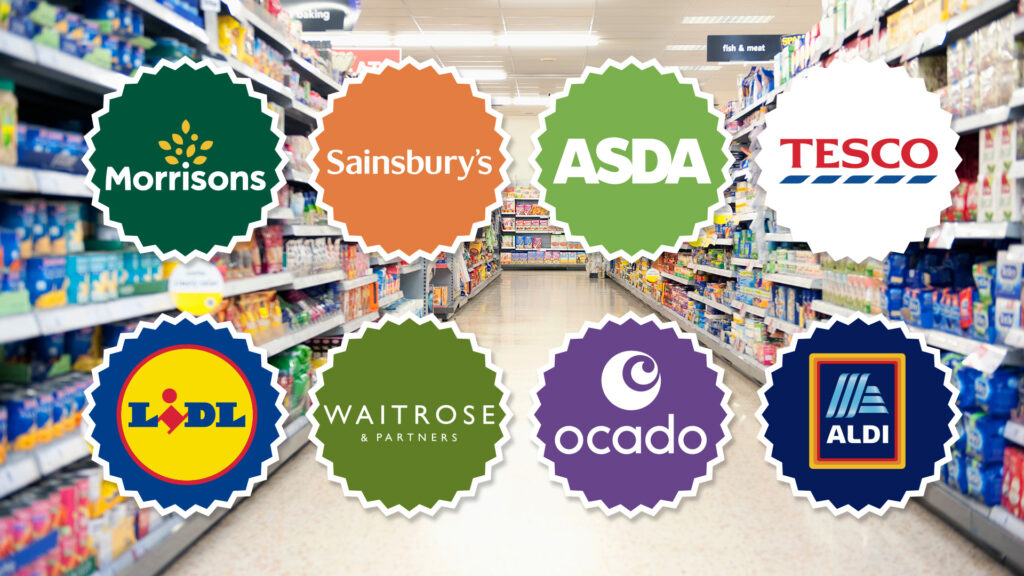THE UK’s cheapest supermarket for January 2025 has been named.
Consumer group Which? compared prices on 100 products from eight supermarkets last month.
The list of items included both branded and own-brand items, such as Birds Eye Peas, Hovis bread, milk and butter.
Shoppers could save £57.08 buying a weekly shop at the cheapest supermarket, compared to the most expensive, according to analysis.
In January, Aldi stole the crown as the cheapest shop with a trolley costing £185.83 on average.
Lidl was just behind Aldi in this month’s ranking, costing only 76p more with the supermarket’s loyalty scheme Lidl Plus and 79p more without (£186.59/£186.62 on average).
Tesco came next, with a basket costing £207.66 with a Clubcard and £213.14 without.
Morrisons‘ prices were £213.49 with a More card and £214.92 without.
For Sainsbury’s, the average basket cost £214.04 with a Nectar card and £223.84 without.
Ocado‘s basket averaged £231.03
Waitrose was the most expensive shop, with a basket of groceries totalling £242.91 on average.
The data shows how shoppers can make big savings just by changing where they buy their food.
Reena Sewraz, Which? retail editor, said: “Our latest monthly analysis once again sees Aldi crowned as the UK’s cheapest supermarket, however, Lidl remains hot on its rival’s heels. Asda has also made up some ground after slipping back in our rankings in recent months.
“With people still feeling the effects of food inflation, they are likely looking to cut costs where they can.
“Our analysis shows that by switching supermarkets consumers could save up to 23%, highlighting the advantages of shopping around where possible.”
What about bigger shops?
Which? also compared prices on a 210 item shop at the eight supermarkets last month.
For a bigger shop of 210 items, Asda beat Tesco with a Clubcard and regained its place as one of the UK’s cheapest supermarkets.
Aldi and Lidl were not included in this comparison as they have a smaller range of products compared to the other supermarkets.
Asda came out cheapest at £518.90, beating Tesco with a Clubcard by £10.11 (£529.01).
Asda’s return to the top spot for the longer shopping list comes just days after it announced it was dropping its Aldi and Lidl price match scheme.
The supermarket, which saw sales fall in the run-up to Christmas, has instead brought back Rollback pricing – claiming to have slashed the prices of more than 4,000 products in-store and online by an average of 25%.
Again, Waitrose was the most expensive on average, with the bigger shop costing £592.34.
How to save on your supermarket shop
THERE are plenty of ways to save on your grocery shop.
You can look out for yellow or red stickers on products, which show when they’ve been reduced.
If the food is fresh, you’ll have to eat it quickly or freeze it for another time.
Making a list should also save you money, as you’ll be less likely to make any rash purchases when you get to the supermarket.
Going own brand can be one easy way to save hundreds of pounds a year on your food bills too.
This means ditching “finest” or “luxury” products and instead going for “own” or value” type of lines.
Plenty of supermarkets run wonky veg and fruit schemes where you can get cheap prices if they’re misshapen or imperfect.
For example, Lidl runs its Waste Not scheme, offering boxes of 5kg of fruit and vegetables for just £1.50.
If you’re on a low income and a parent, you may be able to get up to £442 a year in Healthy Start vouchers to use at the supermarket too.
Plus, many councils offer supermarket vouchers as part of the Household Support Fund.
What’s happening with food prices?
Food prices continue to be a concern for UK households, with the British Retail Consortium (BRC) reporting the fastest monthly rise in nine months this January, at 0.5%.
This follows a trend of rising grocery costs over recent years, driven by a confluence of factors, including increased energy costs, pandemic-related supply chain disruptions, and rising labour costs.
The BRC warns that these price increases may persist, with some forecasts predicting a 4.2% rise in the second half of 2025.
Grocery prices have risen steeply over the past few years due to a number of factors including higher energy costs, supply chain issues caused by the pandemic and rising labour costs.
While the overall trend points towards rising food costs, the competitive landscape of the supermarket industry means retailers are constantly vying for customers by offering competitive prices and deals.
Last week, Asda introduced the price cuts at its more than 1,200 stores immediately, meaning your favourite items could be cheaper from today.
The supermarket slashed prices by an average of 25%, but some fell by up to 50%.
It added that many of its “family favourite” products will now be 5% lower than promotional prices at competitors, for example Tesco‘s Clubcard prices or Sainsbury’s Nectar prices.
The rollback is the first of a series of planned price cuts throughout the year in a bid to move Asda’s entire range to a new so-called “Asda Price” that aims to beat rivals.
Before Christmas, Tesco made a raft of 200 price cuts to items in its Express stores, which are more expensive than its larger supermarkets.
Unlock even more award-winning articles as The Sun launches brand new membership programme – Sun Club
